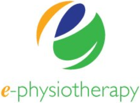Patellar tendinopathy is degenerative change in the tendon below your knee cap. It was previously called patellar tendinitis, but as it is not an inflammatory problem of the tendon, it was renamed. Overuse of the quadriceps muscles in sports that require a lot of running and jumping, causes the tendons and muscles develop small tears. This is a normal part of developing strength for the new activity or increased intensity of current activities you are undertaking. The problem starts when there is inadequate rest periods before increasing activity levels. The small tears do not heal fully and gradually get larger and more painful. Rest from the aggravating activity is required to allow normal healing to take place. When returning to activity again, a very gradual increase is required to prevent the symptoms returning.
Poor foot biomechanics, poor proprioception (balance), weakness in the vastus medialis oblique (VMO) muscle, weakness in the hip muscles, tightness in the iliotibial band (ITB) and rectus femoris, and pelvic rotations all contribute to developing patellar tendinopathy. Physiotherapy to deal with patellar tendinopathy includes advice on training and rest periods, deep tissue massage, myofascial release, dry needling, strengthening and stretching muscles of the ankle, knee, hip and pelvis, proprioceptive exercises, and muscle energy techniques for the pelvis. If you have patellar tendinopathy, book an appointment with e-physiotherapy Edinburgh.

